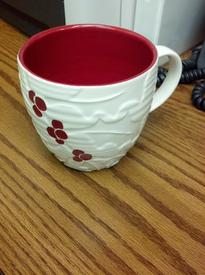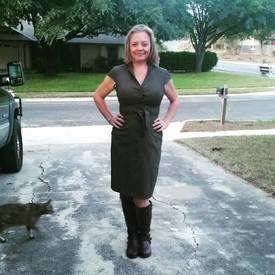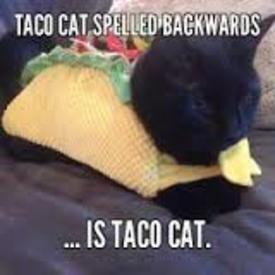Anyone Bake Their Bread? I Have Issues...

ljashley1952
Posts: 275 Member
So my weight has not budged more than a pound or two in the 6 weeks I've been on MFP. I'm pretty sure it's a combination of not enough exercise and under-calculating my calories. I do weigh and measure things, but there is plenty of room for error; especially if I use the MFP database.
I bake my own bread from a recipe called 'New Artisan Bread in Five Minutes a Day'. Great recipe, but it did not come with nutritional info. I haven't added up my own ingredients and calculated per number of servings. I was trying to take the easy way and just use 'Light Whole Wheat Bread' (45 calories) from the database in MLP. Big mistake.
As I went through the stuff I've logged looking for inaccuracies, I discovered a site that lists the nutritional information for 'light whole wheat artisan bread'. They calculate it at 222 calories per slice based on 12 slices per loaf. Now I don't cut them that thick, but I probably get 15 slices from a standard loaf. At any rate, the point is, it's over four times the amount of calories that I was logging from the MFP database.
I made bread yesterday and I'm now counting the exact number of slices I get from a loaf and will do my own calculations in the future. But it did get me thinking about how many other inaccuracies might be lurking in the things I'm logging from the MFP database.
I bake my own bread from a recipe called 'New Artisan Bread in Five Minutes a Day'. Great recipe, but it did not come with nutritional info. I haven't added up my own ingredients and calculated per number of servings. I was trying to take the easy way and just use 'Light Whole Wheat Bread' (45 calories) from the database in MLP. Big mistake.
As I went through the stuff I've logged looking for inaccuracies, I discovered a site that lists the nutritional information for 'light whole wheat artisan bread'. They calculate it at 222 calories per slice based on 12 slices per loaf. Now I don't cut them that thick, but I probably get 15 slices from a standard loaf. At any rate, the point is, it's over four times the amount of calories that I was logging from the MFP database.
I made bread yesterday and I'm now counting the exact number of slices I get from a loaf and will do my own calculations in the future. But it did get me thinking about how many other inaccuracies might be lurking in the things I'm logging from the MFP database.
0
Replies
-
That's not an issue of inaccuracy, though. Any homemade items needs to be based on the ingredients used. If you have a food like bread where recipes can vary and sizes are all over the place, you can't just pick an entry and expect it to be accurate. And "light" bread in particular is usually low calorie because the weight of a slice is low.
The artisan bread might not be close either. If you want to know, you should put in your own information.1 -
Two words: Food scale.
This is a perfect example of why going based on generic database entries can lead you far afield.
I say, unless you know the calories on the package label, you should calculate all your own recipes by ingredient from scratch. Input the ingredients into the recipe builder, add the total weight in grams of the baked loaf as the number of servings (e.g. a 550g loaf would be 550 servings) and then if you cut a 45g slice, enter 45 servings into your food diary.
It's easy to assume that these things don't matter. But added together, they could mean you're eating hundreds more calories a day than you think you are.
Read this thread.1 -
For non-restaurant food, if it didn't come with a nutritional label (aka, you made it yourself), and it's not a single ingredient food, then just choosing an entry from the database is a HUGE mistake. Yes, it's quick, but even assuming that the person who made the entry entered it correctly based on what THEY were eating, the chances of it matching what YOU are eating, especially in quantity, are slim to none.
If you made it, create a recipe for it and log what you're ACTUALLY eating. There's no excuse not to - the recipe builder isn't the most user friendly part of the site, to be fair, but still - if you're serious, you take the time to do it. The absolutely only time I'll use a random entry from the database is if I've eaten at a restaurant that doesn't provide nutritional info and I'm not totally certain of the ingredients/proportions in what I've ordered, and even then I try my hardest to find something that makes the most sense and try to over-estimate the portion. But that's very infrequent - the vast majority of the time I'm entering the actual weights/measures of what I'm actually eating.1 -
unless your making your own recipes in MFP when cooking from scratch they will always be wrong. you cant halfway it, or take the easy way. if it has a bar code scan it, if you make it take the time to enter the recipe. always measure and weigh!1
-
It seems to me it would be much easier to just weigh the flour you use for your bread and look up the calories of that and then divide that number by the number of slices in your loaf.
I don't know if yeast has calories, probably. But if your recipe is more complex than yeast, flour, and water, then I would use the recipe builder tool.1 -
I don't make my own bread, but I do buy the multi-grain take and bake loaves. I do weigh it and for a 2 oz piece it is 150 calories.
Enter your recipe here. It would give you a pretty good calorie amount.1 -
I calculate all the ingredients I use, weigh the loaf, and weigh the slice.
Do the division, voila.1 -
Seriously, you have issues with precision and accuracy.
As FredDoyle said:
Calculate all the ingredients.
Once baked, weigh it, determine nutritional value per preferred serving size.
Now you know what it actually is.1 -
Thanks, everyone! Lesson learned! I put it all into the recipe builder and came out with 207 per slice based on 15 slices per loaf. I will actually count my slices on the current loaf to be sure, but I'll go with that for now. It's far higher than what I had thought. The calculations for light whole wheat bread were no doubt based on a low weight slice and not on the style of wheat bread (meaning light on the wheat flour, as opposed to using all wheat flour). It's a mistake I won't make again.0
-
but... what is a slice? Unless you are using a slicer, each slice is different. go by weight.
(A lot of the light breads I see are tiny slices, and overly airy bread.)1 -
A 45 calorie slice of "light" bread is usually those saw-dust flavored, very small, sad things that only sortof resemble bread.
Your best bet is as described above. Add up everything in the recipe, and get a total number of calories for the loaf. Weigh the finished loaf in its entirety, then weigh the slice you cut off. Then do the division. Guaranteed accuracy.0 -
I buy whole wheat bread from my local bakery, which is packaged and has the nutritional info given for 55g slices. If I make a sandwich with two slices, though, I find they're usually quite a bit smaller, and if I'm making a sandwich it only takes an extra second for me to weigh them.
For instance, today, both slices together weighed in at 67g. Instead of entering 2 slices, I therefore enter 1.2 servings. That gives me more calories to spend on other stuff during the day. It also means I'm not getting quite as much of whatever nutrients are in the bread as I think, so I need to get more elsewhere.
Accuracy is a double-edged sword.0 -
Another lesson to be learned for sure. Do NOT rely on the database for meal calculation. I have been doing too much of that and I'm guessing that this is where my weight-loss has stalled. I've been so careful to weigh my food, but when I've found it in the database, I've cut corners and used that and adjusted my serving size accordingly. Really a bad idea.0
-
I have several bread recipes and they all produce different calorie counts. Use the recipe builder and weigh out your ingredients if you want to be accurate.0
-
lemurcat12 wrote: »That's not an issue of inaccuracy, though. Any homemade items needs to be based on the ingredients used. If you have a food like bread where recipes can vary and sizes are all over the place, you can't just pick an entry and expect it to be accurate. And "light" bread in particular is usually low calorie because the weight of a slice is low.
The artisan bread might not be close either. If you want to know, you should put in your own information.
Yep. I make my own bread, but I've entered my recipes into MFP so they are accurate. I enter *all* of my homemade stuff by hand. It takes like 10 minutes, and will save you lots of frustration later on.
1 -
The database can be your best friend or worst enemy! Especially with home cooked food, you're so much better off taking the time to enter it into the recipe builder and save it. Otherwise your shooting sparrows in the dark.1
-
Another thought to add - the amount of flour necessary to make a well risen bread dough will vary based on the time of year and the humidity in the air.1
-
-
Bread is very high in calories, simply because one quarter of a cup of flour is 100 calories. If you make a loaf, let it cool completely, slice it, then freeze it. Seriously, it's very important for you to make bread a special treat and not an everyday habit: major calorie bomb!1
-
Not everyone needs to lose weight.
Not everyone needs to be concerned about "calorie bombs."1 -
OP is clearly trying to lose weight and avoid calorie bombs, though.
This isn't about you. It's about her and her question.0 -
Nor is it about your projecting. Not everyone needs to be concerned.
Her question was resolved, now silly things are being claimed.0 -
Bread is very high in calories, simply because one quarter of a cup of flour is 100 calories. If you make a loaf, let it cool completely, slice it, then freeze it. Seriously, it's very important for you to make bread a special treat and not an everyday habit: major calorie bomb!
^^Not so for everyone. I eat it everyday, and have lost 160+ pounds. Nothing is a "special" treat for me. If I want it, I make it fit in my daily calorie budget. Moderation in all things has worked very well for me, and I will continue to eat what I want in moderation.
1 -
Two words: Food scale.
This is a perfect example of why going based on generic database entries can lead you far afield.
I say, unless you know the calories on the package label, you should calculate all your own recipes by ingredient from scratch. Input the ingredients into the recipe builder, add the total weight in grams of the baked loaf as the number of servings (e.g. a 550g loaf would be 550 servings) and then if you cut a 45g slice, enter 45 servings into your food diary.
It's easy to assume that these things don't matter. But added together, they could mean you're eating hundreds more calories a day than you think you are.
Read this thread.
You won't get any better advice than this!
1 -
I weigh the cooked loaf & enter this as number of servings in the recipe builder.
I then weigh each slice I cut & enter this in my food diary as number of servings I eat. 1
1 -
Quick note about the recipe builder. Unfortunately the number of servings only goes up to 999, so if your finished loaf weighs more than 1,000 grams you might need to tweak the way you enter the recipe. e.g. if the loaf weighed 1,200 grams, I would halve that number, and then halve all of the ingredients in the recipe builder. It's a bit fiddly but you'll still get a fairly accurate count per slice.1
-
Yes I noticed they had changed number of servings in the new (improved!!?) recipe builder.
If my loaf of bread weighs 880g, I log it as 88 servings in the recipe builder.
In my food diary, I log 144g slices of bread as 14.4 servings.1 -
shrek1970uk wrote: »Yes I noticed they had changed number of servings in the new (improved!!?) recipe builder.
If my loaf of bread weighs 880g, I log it as 88 servings in the recipe builder.
In my food diary, I log 144g slices of bread as 14.4 servings.
That also makes a lot of sense!1 -
I bake my own bread and enter the recipes exactly....
But there is an easy rule of thumb:
Normal bread (without added fat, or not more than, say, 1-2 tablespoon of oil per loaf) is almost always between 200 and 300 calories per 100g, but usually around 250. 100g = 3.5 oz.
Why that is -- because bread is mostly flour and water. Flour is mostly starch, with a bit of fiber added, and therefore averages 365 for white flour. The higher the wholemeal content, the more starch is replaced with fibre, and so the calorie content goes slightly down.
When making bread dough, you add water to the flour. In most recipes, between 1/3 and 1/2 of the dough is water. 1/3 is quite dry. 1/2 makes a very wet dough, almost impossible to knead and shape if not using rye flour. When you bake the bread, some of the water evaporates. Generally, wholemeal flour can take up more water. Therefore white breads tend to be higher in calories (>250 cal/100g) than wholemeal ones (<250 cal/100g).
Generally, this makes bread a calorie-dense food -- low calorie density is <100 calories/100g, but bread is >200.
That 's not surprising, as bread is an archetypical symbol for nutrition generally!
What that has to do with 'slices' -- if the bread is very light and airy, a slice is 30g (1 oz) (eg toast), if the bread is heavier and denser, a slice is up to 50g (1.5-2 oz) if the bread has a standard tin form. (Larger slices of free-shaped breads weigh more, of course.) and of course slices can be thicker and thinner. I put my slices on the scale.
Therefore they say a slice of toast with a bit of butter is 100 calories. For a denser bread (as homemade breads tend to be), one slice without the butter will already be 100-125 calories.
45 calories for a slice of bread is very rare -- those slices must be very small.1 -
I'm trying to lose weight and have no qualms eating calorie bombs, epsecially homemade bread.
Like always, I have nothing useful to add. I make a lot of food from scratch and use the receipe builder and if it's a recipe you use all of the time, you can use it again and again. Just be careful about how many slices/the weight of what you log. I'm greedy so often eat an extra quarter or half a portion to what the receipe says it serves.
1
This discussion has been closed.
Categories
- All Categories
- 1.4M Health, Wellness and Goals
- 398.1K Introduce Yourself
- 44.7K Getting Started
- 261K Health and Weight Loss
- 176.4K Food and Nutrition
- 47.7K Recipes
- 233K Fitness and Exercise
- 462 Sleep, Mindfulness and Overall Wellness
- 6.5K Goal: Maintaining Weight
- 8.7K Goal: Gaining Weight and Body Building
- 153.5K Motivation and Support
- 8.4K Challenges
- 1.4K Debate Club
- 96.5K Chit-Chat
- 2.6K Fun and Games
- 4.8K MyFitnessPal Information
- 12 News and Announcements
- 21 MyFitnessPal Academy
- 1.5K Feature Suggestions and Ideas
- 3.2K MyFitnessPal Tech Support Questions
















